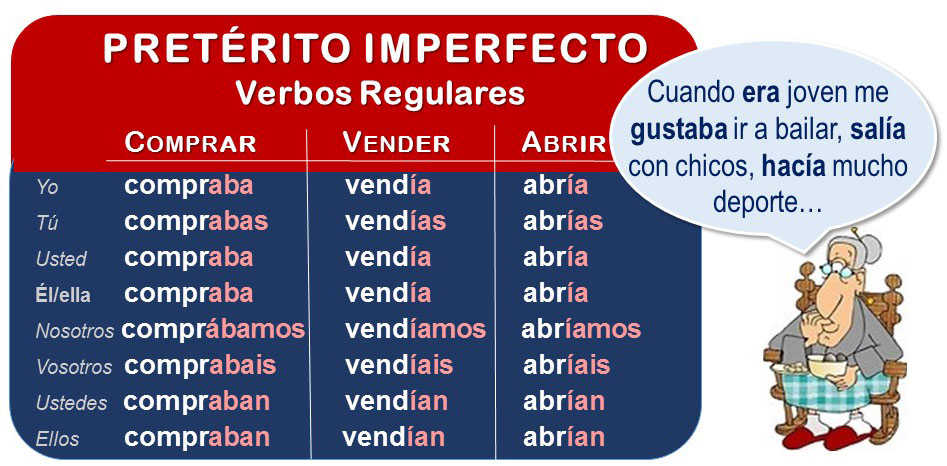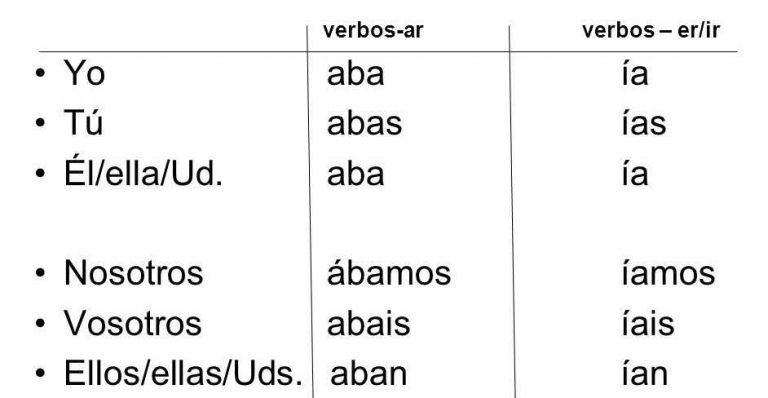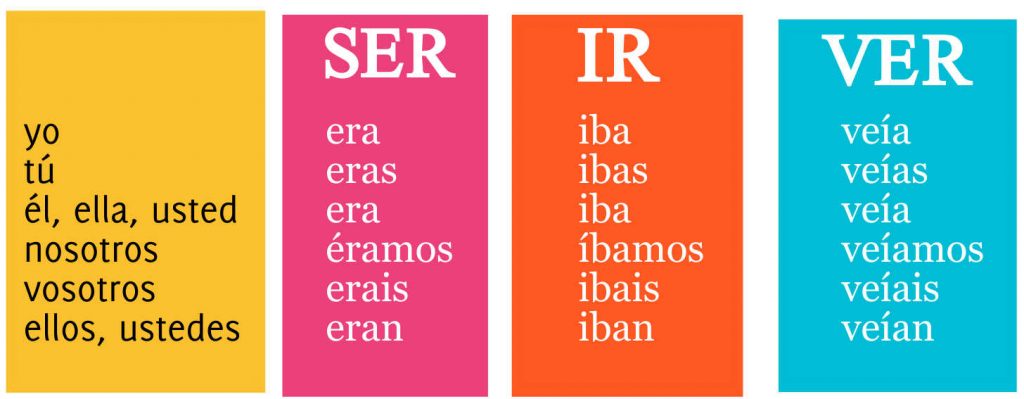The imperfect tense in Spanish is really very simple to conjugate since there are only three irregular verbs. Let’s see how to do it.

The imperfect tense (el pretérito imperfecto) is one of the several past tenses in Spanish.
It is used mainly to describe past habitual actions or to set the scene in the past, what a person “used to do” or “was doing» something. Although we will see this more in detail in another post.
1. Regular verbs in the Spanish imperfect tense

Since the 1st person and 3rd person singular have the same conjugation endings, context and subject pronouns will indicate the subject if it is ambiguous. Look at the examples:
(Yo) jugaba al fútbol los domingos (I used to play football on Sundays.)
Mi hermano jugaba siempre al tenis. (My brother always played tennis.)
(Yo) tenía un gato. (I used to have a cat.)
Mi vecino tenía un conejo. (My neighbor used to have a rabbit.)
2. Irregular verbs in the imperfect tense
There are only three verbs with irregular conjugations in the imperfect tense. No stem-changes, no spelling-changes, only these three. Even more, as you can see, «ver» has the regular ending with just an extra «e»:

Remember that in Spanish we have three main past tenses in the indicative mood: pretérito indefinido, pretérito perfecto, pretérito imperfecto, and pretérito pluscuamperfecto. There is another past tense el pretérito anterior, but its use has practically disappeared. You need to learn each of them individually and in contrast to understanding the differences. Pretérito means «past» so it is like the family name of all of them.
3. Spanish PRETÉRITO IMPERFECTO practice and quizzes
Now, let’s practice everything you have learned with the crossword below, you can also discover more about when to use this past tense. Remember you can contact your tutor with any question you have about this topic. Don’t you have a Spanish personal tutor yet?
Please, leave a message on the comments if you want we prepare more activities about this topic. Thanks for helping us to improve.
You can learn more about the Spanish pretérito imperfecto clicking on the link.